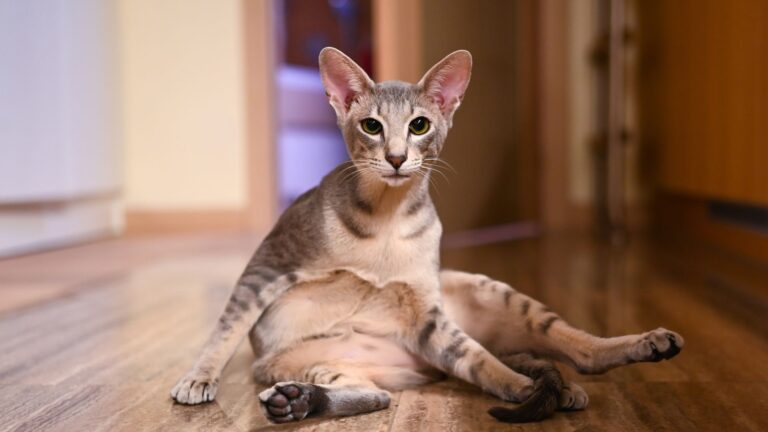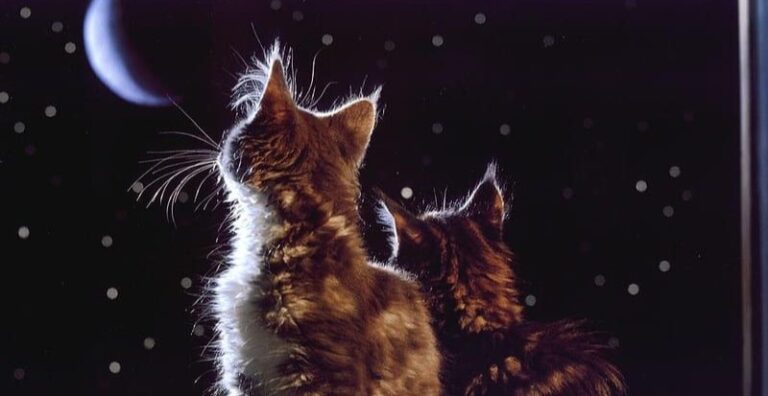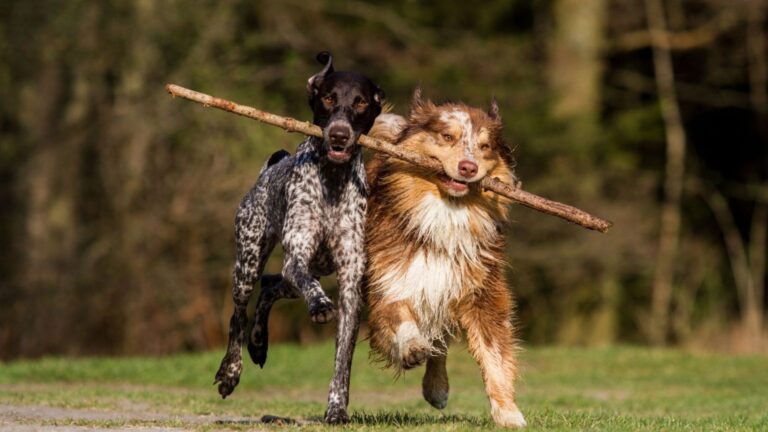15 Things That Make Birds Tell Their Friends About Your Yard
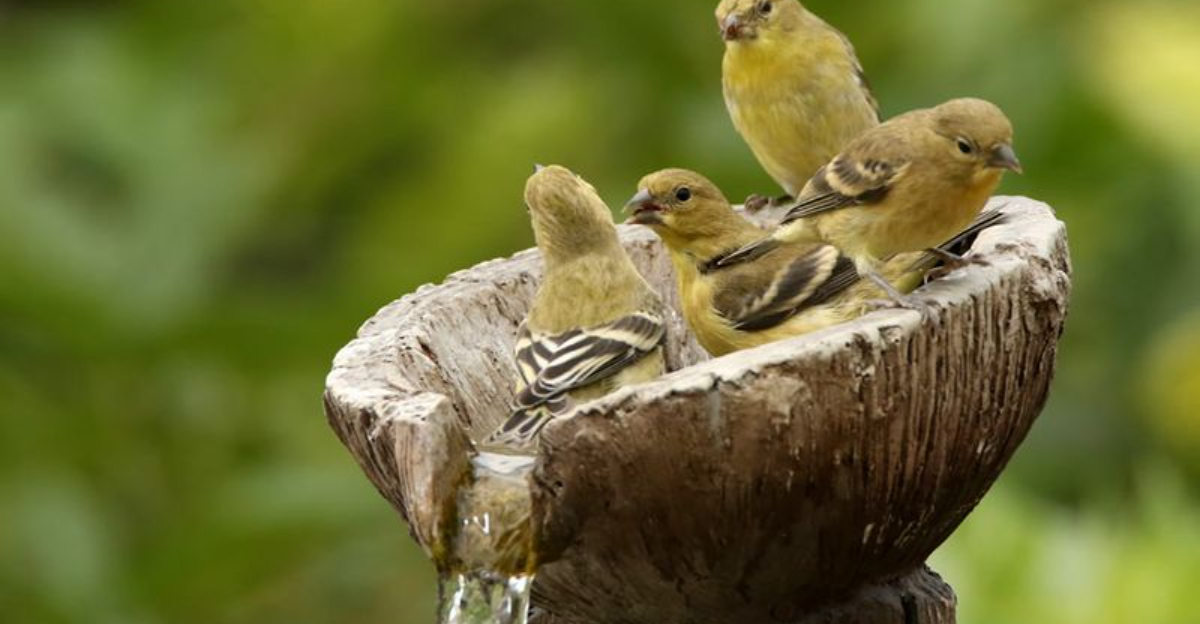
Ever wondered what makes birds flock to certain yards while ignoring others? Birds are surprisingly picky about where they hang out and actually communicate good spots to their feathered friends.
Creating a bird-friendly yard isn’t just good for wildlife – it adds natural beauty and life to your outdoor space too.
1. Fresh Water Features
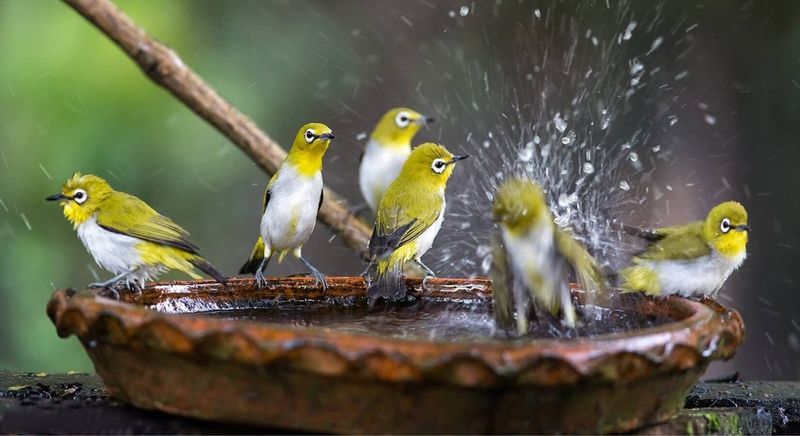
Nothing attracts birds faster than the sound of splashing water. A simple birdbath with clean water will bring visitors within hours.
Birds need water not just for drinking but for bathing too – keeping their feathers in top flying condition. Change the water regularly and add a small dripper to create movement that catches their attention from above.
2. Native Plant Buffet
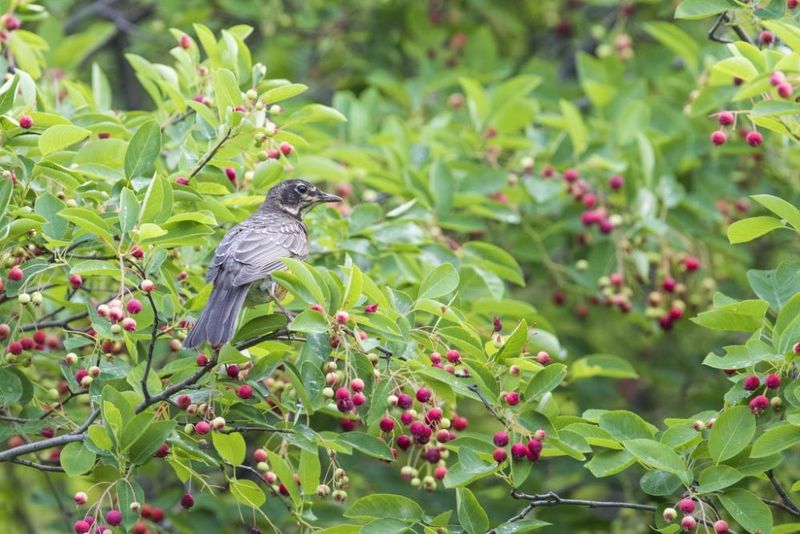
Birds gossip about gardens with native plants that provide natural food sources. Berry-producing shrubs like elderberry, serviceberry, and dogwood are avian favorites.
Native plants support the insects birds need to feed their young. Unlike exotic varieties, these plants evolved alongside local birds, creating perfect food partnerships. Even better, they require less maintenance once established.
3. Seed Selection Variety

Smart bird hosts offer a smorgasbord of seeds. Black oil sunflower seeds attract cardinals and chickadees, while nyjer seeds bring in finches.
Different birds have different beak shapes designed for specific foods. Mixing it up with safflower, millet, and peanuts ensures you’ll host diverse feathered guests. Seasonal changes in your seed menu will keep new species discovering your yard year-round.
4. Layered Landscaping
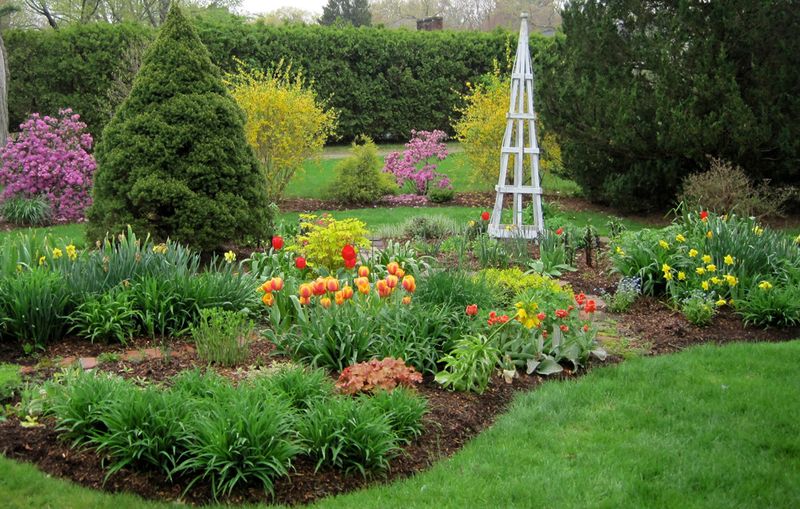
Birds love yards with vertical diversity – ground cover, shrubs, and trees of varying heights. This natural architecture creates safe travel corridors and multiple habitat zones.
Ground-feeding juncos appreciate low plants while warblers prefer mid-level shrubs. Woodpeckers and hawks seek tall trees. Creating these layers mimics natural forests and gives birds places to feed, nest, and hide from predators at every level.
5. Year-Round Shelter Options
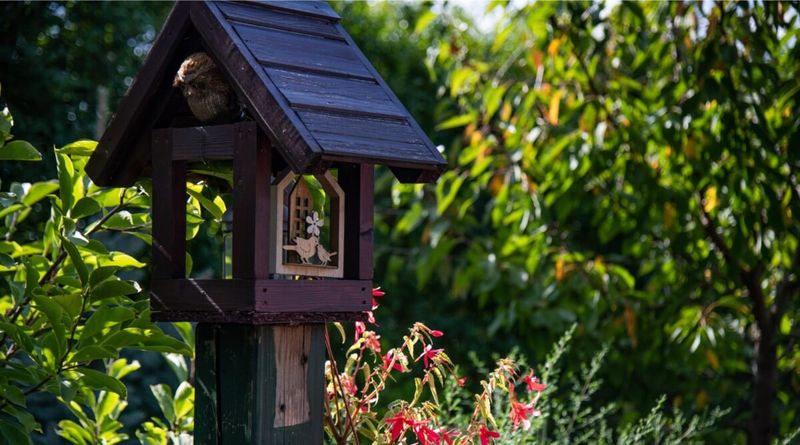
Evergreen trees and dense shrubs offer crucial protection during harsh weather. Birds remember these sanctuaries and return to them when conditions turn rough.
Brush piles from fallen branches provide ground birds with quick escape routes from predators. Even in winter, these shelters harbor insects for hungry birds. Leave some areas of your yard a bit wild – what looks messy to us looks like safety to birds.
6. Nesting Material Buffet
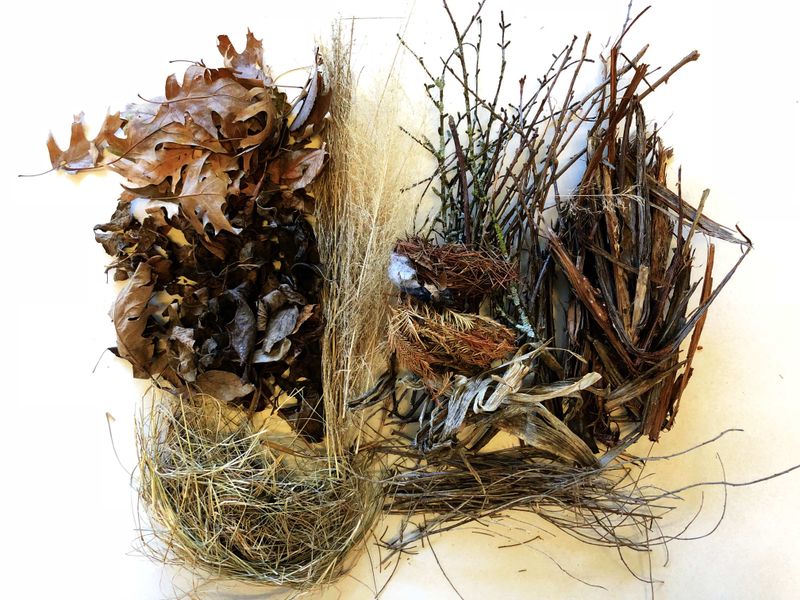
Put out a smorgasbord of nesting materials and watch birds shop for home goods. Small piles of pet fur, short pieces of yarn, and dried grass clippings become building supplies.
Different species need different materials – hummingbirds collect spider silk while robins gather mud. Avoid dryer lint though, as it can hold moisture and harm nestlings. Providing these materials in spring makes your yard a one-stop nest-building destination.
7. Chemical-Free Zones
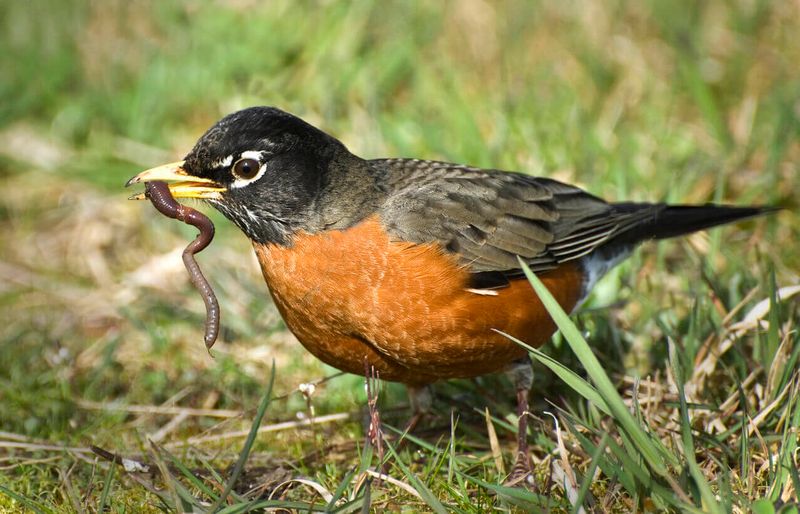
Birds quickly abandon yards treated with pesticides. These chemicals kill the insects birds need and can poison birds directly when they eat tainted food.
Natural pest control methods like companion planting and encouraging beneficial insects create healthier ecosystems. Birds themselves are excellent pest controllers, with a single chickadee family consuming up to 9,000 insects during nesting season. Your chemical-free yard becomes a safe dining zone.
8. Feeder Placement Strategy
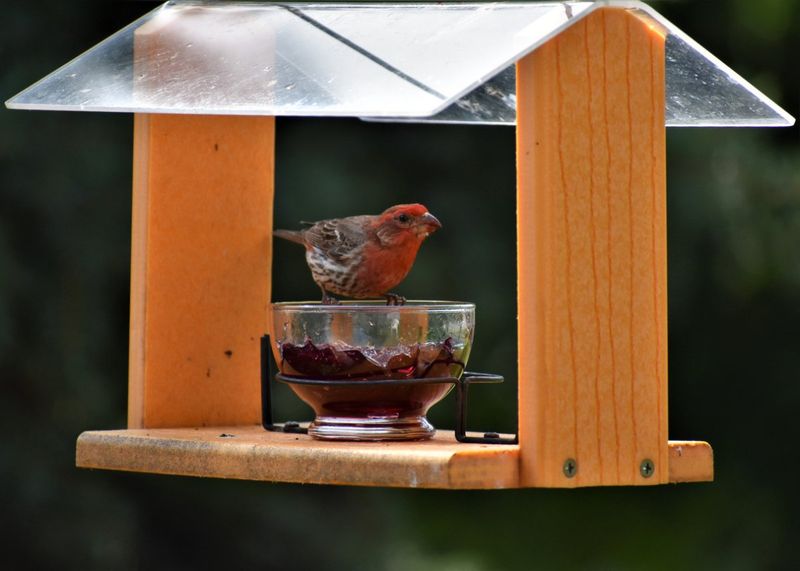
Clever feeder positioning makes birds feel safe enough to linger. Place feeders near protective cover but not so close that predators can launch ambushes.
Windows are deadly collision hazards, so keep feeders either within three feet or beyond thirty feet from glass. Multiple feeding stations reduce competition and territorial disputes. Birds appreciate feeders that stay full during predictable times – they’ll schedule their visits accordingly.
9. Dust Bath Stations
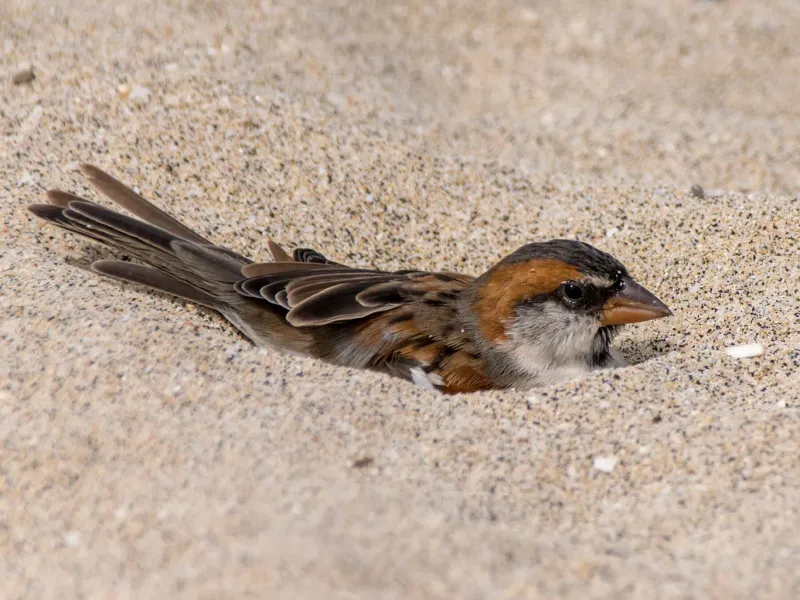
Few bird amenities rival a good dust bath for popularity. Fine, dry soil helps birds maintain healthy feathers and control parasites naturally.
Create a simple dust bath using a shallow container filled with a mixture of fine sand, dry garden soil, and wood ash. Place it in a sunny spot where the soil stays dry. Sparrows, thrushes, and wrens will gather to fluff, roll, and socialize in this spa-like spot.
10. Moving Water Attractions
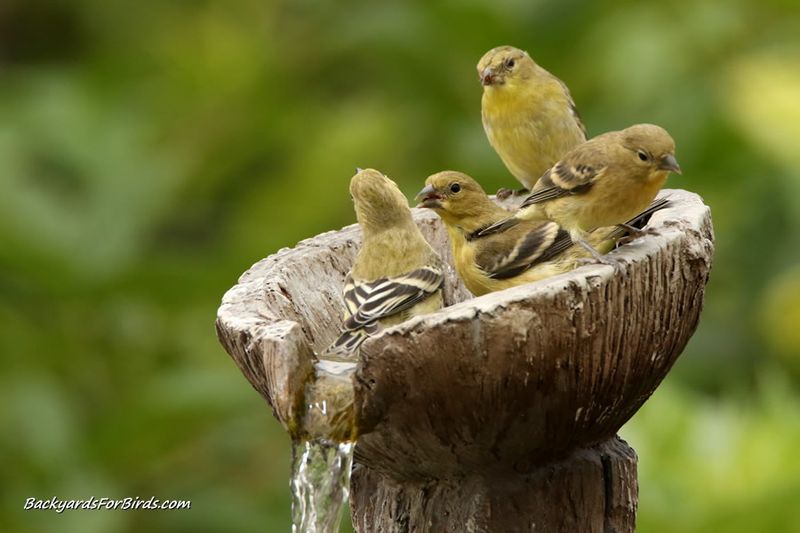
Rippling water catches birds’ attention from impressive distances. A simple solar fountain or water wiggler turns an ordinary birdbath into a bird magnet.
The sound and movement of water triggers birds’ instinctual response – in nature, moving water is typically fresher and safer. As a bonus, moving water prevents mosquito breeding. Birds that rarely visit feeders, like warblers and thrushes, often can’t resist investigating splashing sounds.
11. Fruit And Berry Offerings
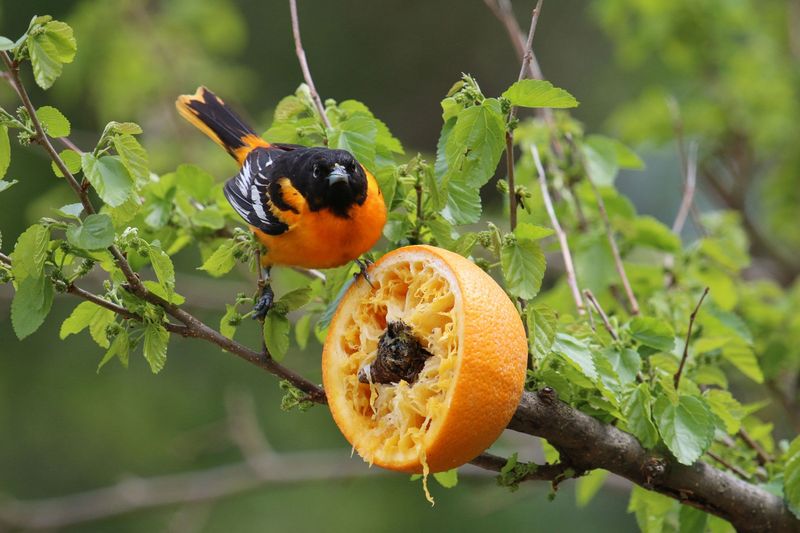
Ripe fruits attract fruit-loving species that seed feeders might miss. Orioles go crazy for orange halves, while waxwings and tanagers flock to berry offerings.
Secure fruit to platform feeders or special fruit holders. Apple chunks, grape halves, and raisins soaked in water make excellent treats. During migration seasons, these high-energy foods become especially valuable to traveling birds who spread the word about your generous offerings.
12. Snag Trees For Woodpeckers

Dead trees or “snags” become woodpecker condominiums and insect buffets. If safe to leave standing, these natural features attract woodpeckers, nuthatches, and chickadees.
Woodpeckers excavate nesting cavities that later house other species. The decaying wood harbors insect larvae – prime woodpecker food. If a complete snag isn’t possible, even leaving a tall stump can create valuable habitat that birds will recommend to their friends.
13. Hummingbird Nectar Gardens
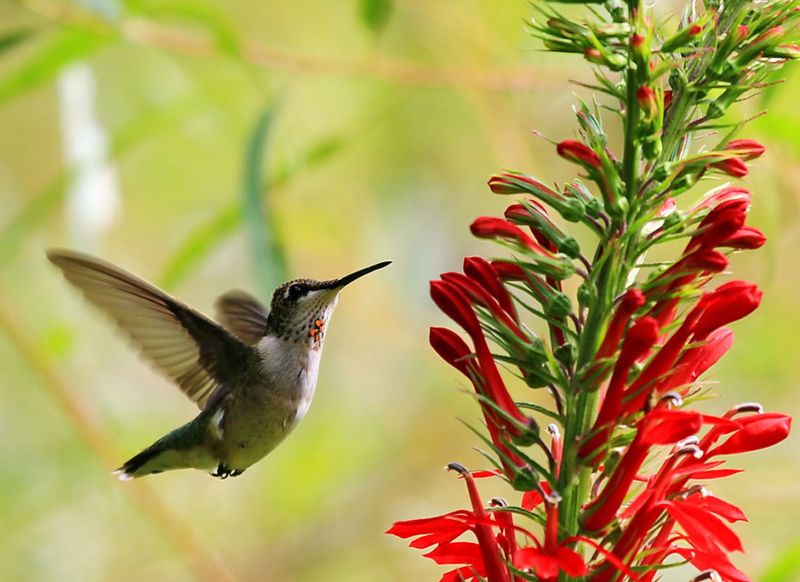
Hummingbirds spread the buzz about yards with trumpet-shaped flowers in bright colors. Plant red salvias, bee balm, and cardinal flowers in clusters for maximum attraction.
These tiny birds remember reliable nectar sources and return year after year. Supplement natural flowers with clean hummingbird feeders filled with simple homemade nectar (four parts water to one part white sugar). Skip the red dye – the colored parts of the feeder provide enough visual attraction.
14. Cat-Free Environment
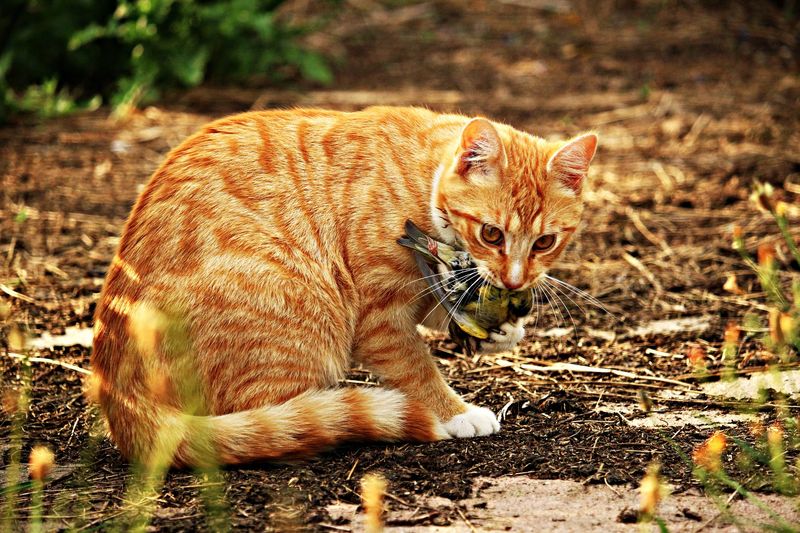
Word travels fast among birds about yards where cats prowl. Even well-fed cats instinctively hunt birds, killing billions annually in the US alone.
Keep cats indoors or create a “catio” for outdoor enjoyment without bird access. If neighborhood cats visit, try motion-activated sprinklers or sonic deterrents. Birds quickly learn which yards are safe zones and which pose deadly risks – they’ll choose the safe ones every time.
15. Winter Suet Stations
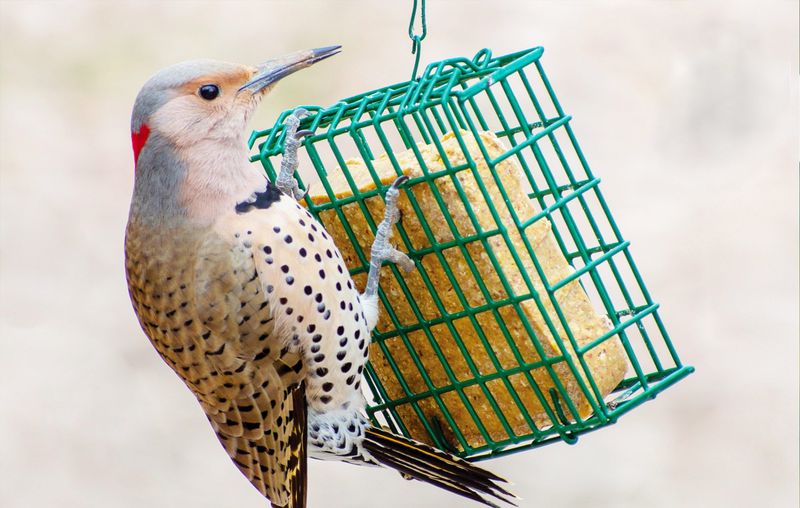
Energy-rich suet becomes the talk of the bird community during cold months. This high-fat food helps birds maintain body heat when insects are scarce.
Commercial suet cakes work well, but homemade mixtures with peanut butter, cornmeal, and dried fruits attract even more species. Special upside-down suet feeders favor woodpeckers and nuthatches while discouraging larger birds and squirrels. Birds remember reliable winter food sources and return faithfully.




